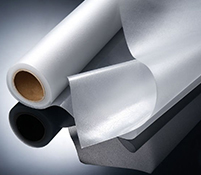

Welcome to Pinghu Zhanpeng Hot Melt Adhesive Web & Film Co., Ltd. Enterprise Official Website.

Elastic bandages Apertured Film can be classified based on their applications and product performance. Rigid bandages are mainly used for fixation, where rigidity is defined as the ability of the bandage to oppose muscle expansion when it contracts. It depends on the elastic recoil of the material used in its construction. The more compact the weft and with a lower presence of elastic fibers, the shorter the stretch of the bandage and the more its rigidity.

The rigidity of a bandage can be measured with simple, economical, and reproducible methods and expressed with various indices, the studied of which is the “static stiffness index,” which is the difference between the pressure exerted in vivo by the bandage on the surface of the leg standing and lying. If this pressure difference is greater than 10, the bandaging is of the rigid type. Stiffness signifies the increase in the pressure of the bandage given by the resistance offered by the bandage with a 1 cm increase in the circumference of the limb.
Elasticity and extensibility are the two important characteristics of compression bandages. Elasticity is defined as the ability of the bandage to regain its original form after extension, due to the addition of elastic threads in the longitudinal direction of the bandage. The force employed to stretch the bandage deformation energy indicates the elastic power or tension. The ability of the bandage to maintain tension and therefore the pressure it exerts depends on its elastomer properties, which in turn depend on the thread and the method used to construct the fabric.
Extensibility is defined as the ability of the bandage to elongate when subjected to stretching; it is measured by the lengthening of the bandage when a force of 10 N is applied per cm of height and is expressed as a percentage of the length at rest. Once a given extension has been reached, the physical structure of the bandage prevents further stretching. This condition is called “locking.” According to Stemmer’s classification, short-stretch bandages should lock once a 70 per cent of extension has been reached (preferably 30–40 per cent), while long-stretch bandages should lock beyond 140 per cent.Because of their respective long histories and tradition, the German-speaking countries adopted different standards to those used in England. The German standard classifies bandaging materials into the following types.




